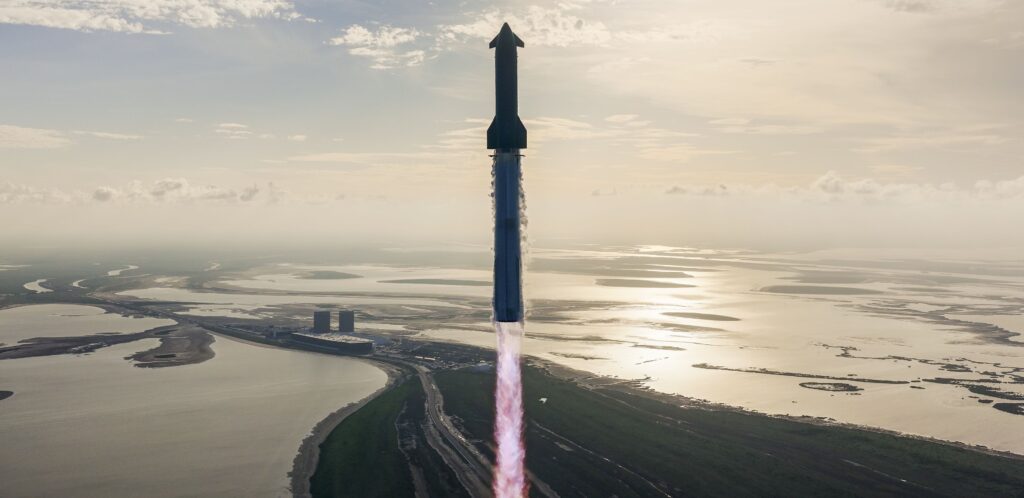After three failed attempts earlier this year, SpaceX reached an important milestone on Tuesday night when its massive Super Heavy-Starship rocket completed a seemingly successful test flight, even though parts were damaged during reentry.
The upper stage, Starship, faced extreme heat that harmed an engine shield and partially melted a control flap, but it stayed stable and landed safely with a powered splashdown in the Indian Ocean.
SpaceX celebrated the achievement, announcing, “Splashdown confirmed! Congratulations to the entire SpaceX team on an exciting tenth flight test of Starship!” The Super Heavy booster also performed as planned, launching Starship out of the lower atmosphere and returning for a controlled splashdown in the Gulf of Mexico while simulating an engine failure during descent.
The one-hour, six-minute mission highlighted SpaceX’s progress in building the world’s most powerful rocket, generating 16 million pounds of thrust—more than double NASA’s Space Launch System or the Saturn V.
Earlier flights had ended in midair explosions, raising questions about meeting NASA’s 2027 Artemis moon mission deadline, and major challenges remain, particularly the complex orbital refueling process requiring 10–20 tanker flights of cryogenic fuel—a feat never done before.
A senior engineer noted, “We are not going to get a crewed Starship to the moon by 2030 under any circumstances. That doesn’t mean they’ll never get there, but it’s too big of a technical leap in such a short time.”
Meanwhile, China is accelerating its lunar program, aiming to place its flag on the moon by the decade’s end, potentially before NASA and SpaceX complete their first crewed lunar landing.









